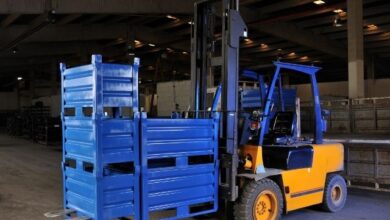The Role of Cattle Gates in Effective Farm Management

Effective farm management is crucial for the success and productivity of any agricultural operation. One essential aspect of farm management is the proper handling and control of livestock, particularly cattle. Cattle gates play a vital role in facilitating the movement and management of cattle within a farm. In this article, we will explore the importance of cattle gates and how they contribute to efficient and organized farm management.
Ensuring Safe and Secure Enclosures
Cattle gates are instrumental in creating safe and secure enclosures for cattle. They serve as barriers that prevent cattle from straying into unauthorized areas or escaping from the farm. By strategically placing gates at the entry and exit points of different pastures, pens, and holding areas, farmers can maintain control over the movement of their cattle, reducing the risk of accidents, injuries, or loss.
Cattle gates should be made of durable and sturdy materials such as steel or heavy-duty wood to withstand the force exerted by the animals. This ensures that the gates remain intact and functional, providing a reliable means of containment.
Gates should be properly installed with secure hinges and latches to prevent cattle from pushing or opening them accidentally. This ensures that the enclosures remain secure at all times, giving farmers peace of mind and minimizing the need for constant supervision.
Streamlining Livestock Handling
Cattle gates contribute to the efficient and streamlined handling of livestock. They act as checkpoints or access points that guide cattle through various stages of management, such as grazing rotation, milking parlors, loading chutes, or veterinary areas. This organized movement reduces stress on both the animals and the farm staff, leading to improved productivity and overall animal welfare.
The strategic placement of a cattle gate allows for the creation of distinct zones within the farm, enabling controlled and targeted management practices. This includes separating different groups of cattle based on age, breed, or production stage, facilitating specific feeding regimes or medical treatments.
By incorporating gates with adjustable widths or multiple access points, farmers can control the flow of cattle in and out of specific areas. This ensures that only the desired number of animals enter a particular section, preventing overcrowding or accidental mixing of groups.
Supporting Efficient Grazing Management
Efficient grazing management is crucial for optimal pasture utilization and herd nutrition. Cattle gates play a pivotal role in implementing rotational grazing systems and managing pasture access effectively.
Rotational grazing involves dividing the grazing area into smaller paddocks and regularly rotating cattle between them. Cattle gates act as access points to these paddocks, enabling controlled entry and exit of animals. This practice prevents overgrazing, allows for proper regrowth of grass, and optimizes forage utilization.
In rotational grazing systems, gates should be designed to be easily movable, allowing farmers to change pasture configurations and adjust the size of grazing areas as needed. This flexibility promotes sustainable land management and ensures the availability of fresh forage for the cattle.
Enhancing Biosecurity Measures
Maintaining strict biosecurity measures is crucial to prevent the spread of diseases among livestock. Cattle gates play an essential role in implementing and enforcing these measures effectively.
By establishing designated entry points and controlled access areas, cattle gates enable farm staff to monitor and regulate the movement of people, vehicles, and equipment. This helps prevent the introduction of potential pathogens, ensuring the health and well-being of the cattle.
In situations where disease outbreaks occur, cattle gates allow for quarantine areas to be established swiftly. Isolating affected animals becomes easier, minimizing the risk of further transmission within the herd and the farm.
Ensuring Economic Efficiency
Cattle gates also contribute to economic efficiency in farm management. They enable farmers to optimize resource utilization and reduce operational costs.
Through proper gating systems, farmers can implement rotational grazing and controlled feeding programs, ensuring that cattle have access to the right amount of pasture and feed. This prevents wastage and unnecessary expenses.
Cattle gates also facilitate efficient movement of cattle during loading and transportation. By having well-designed gates at loading chutes, farmers can safely and swiftly load cattle onto trucks, minimizing stress on the animals and reducing loading time.
Conclusion
Cattle gates are indispensable tools in effective farm management. They ensure the safety and security of livestock, streamline livestock handling, support efficient grazing management, enhance biosecurity measures, and contribute to economic efficiency. By investing in well-designed and properly installed cattle gates, farmers can create a well-organized and productive farming environment, promoting the overall success of their agricultural operations.





